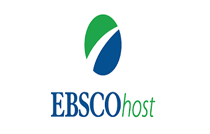Mansoura Veterinary Medical Journal
Document Type
Original Article
Subject Areas
Food Hygiene
Keywords
Garlic, Ginger, quails, carcass, Aspergillus
Abstract
Objectives: this work was under taken to evaluate the influence of dietary supplementation of ginger, garlic and their combination on quail meat through assessment of its contamination with fungi and its toxins and its effect on human. Methods: We obtained 110, Japanese quail chicks of one day old were included in this study, they were further subdivided into four groups (n = 25/group): Control group was free from any dietary additions and the other three treated groups with ginger, mixed and garlic supplements, respectively for 45 days. After scarifying, skin swab specimens were assembled from quail breast and thigh muscles. Results: revealed that breast and thigh muscles in garlic treated group have the lowest counts of total mold and yeast than those of the others. Notably, control group represented the highest incidence in mold and yeast contamination as compared to that of the others. The isolated mold species were Aspergillus spp. Mucor , Penicillium spp. , Fusarium spp. , Rhizopus , Alternaria and Cladosporium spp. . The isolated Aspergillus strains were A. flavus , A. fumigatus and A. niger Conclusions and potential relevance: It could be concluded that this research established the significance of the dietary addition of ginger, garlic and their combination as antifungal agents in the quail meal whereas, the garlic was the superior supplement for an obvious and considerable decreasing of yeast and mold loads in quails meat.
How to Cite This Article
gad, tamer
(2021)
"Influence of Dietary Supplementation of Ginger, Garlic and their Combination on Mycological Assessment of Quail Carcasses,"
Mansoura Veterinary Medical Journal: Vol. 22:
Iss.
2, Article 3.
DOI: https://doi.org/10.21608/mvmj.2021.65644.1037
Receive Date
2021-03-01
Accept Date
2021-04-02
Publication Date
6-1-2021






